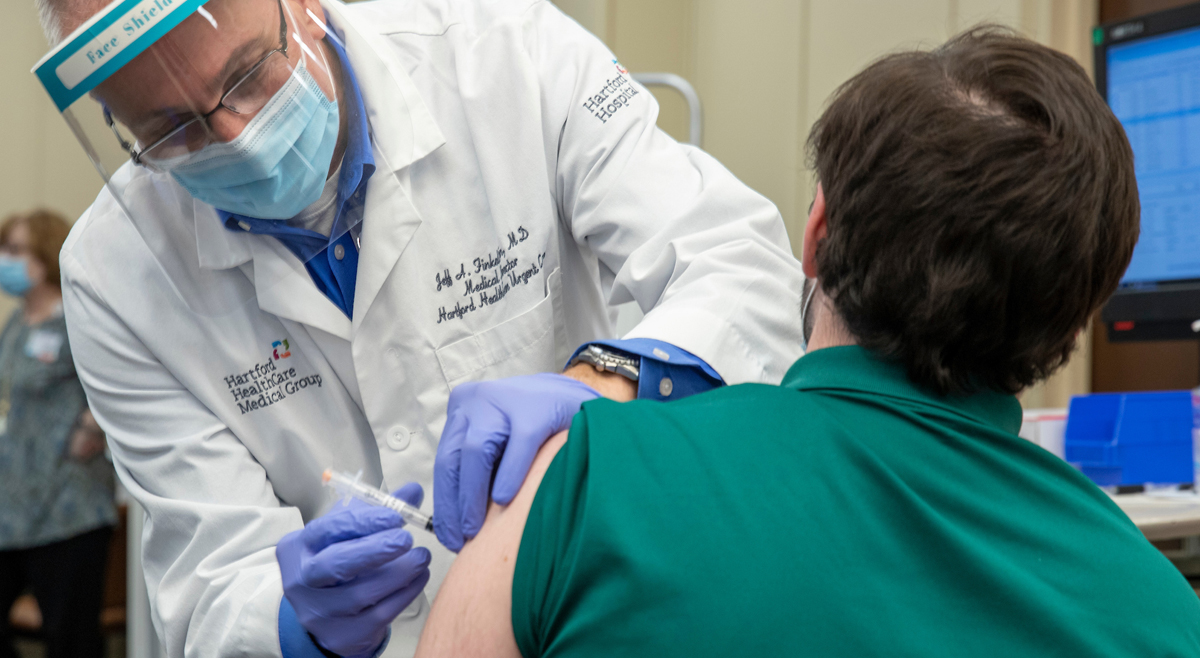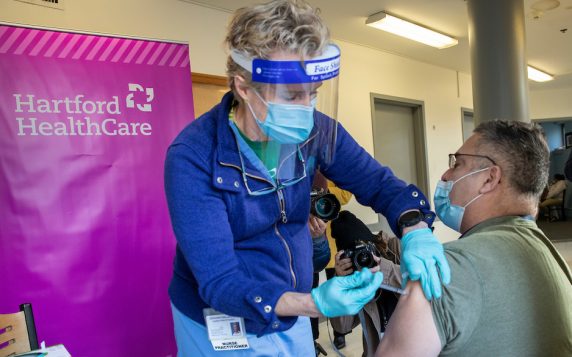It’s the big day — your COVID-19 vaccine appointment — and you should be as prepared as possible for the best results.
Prepared? Yes! While not a sporting event or exam, a few key steps before rolling up your sleeve can ensure things run smoothly. (You won’t even need an appointment. Starting April 30, all Hartford HealthCare vaccination sites are open to walk-ins.)
Before getting your vaccine, you should:
- Have something to eat and drink. The entire process, including time spent traveling and waiting before and after your vaccine, may take a bit. You will feel better if you aren’t hungry or thirsty.
- Avoid medication. Pre-medicating with over-the-counter pain reliever seems like a good idea but the Centers for Disease Control and Prevention (CDC) advises against it.
- Reschedule other tests. Plan at least two weeks between the COVID vaccine and those for flu and shingles. Also, women should not have a mammogram for at least two weeks after their vaccine for the most accurate results.
- Give yourself enough travel time. To keep everything running smoothly, we ask that you arrive 15 minutes early to fill out any paperwork.
- Bring a mask. Masks covering the mouth and nose are required at our facilities. You will need to keep it on during the entire vaccination process.
- Plan your outfit. We give the COVID-19 vaccine in the upper arm or shoulder area, so wear a tank top under a cardigan, a shirt with short sleeves or a neckline that can stretch to give shoulder access. We want to ensure your privacy while giving the vaccine.
When you arrive for your vaccination
- You can park at any of our facilities for free.
- Wear your mask and bring your driver’s license/ID and health insurance card. There is no fee for the vaccine.
- Come in alone so we can ensure proper physical distancing.
- Check in. A registration assistant will help you fill out your registration paperwork and give you a CDC vaccine card with your name and information about your vaccine, including the type and date. If you’re getting a two-dose vaccine, you need to bring the card in for the second dose.
- Wait in line for your turn, leaving at least six feet between you and others.
- Meet the vaccinator who will check your information, swab part of your preferred upper arm with an alcohol rub, give you the shot and cover the area with a small adhesive bandage. The whole process takes about a minute.
- Wait the 15-minute observation period in a designated area to be monitored for allergic reactions. You can read or use your smartphone while you wait, but, to be courteous, please don’t make phone calls or take photos at this time. If you have any concerns while waiting, tell a staff member.
- If you feel fine after the observation period, you’re free to go.
Reported side effects from the COVID-19 vaccine include: pain, swelling or redness at the injection site; tiredness; headache; muscle or joint pain; fever or chills; nausea or vomiting; and swollen lymph nodes. These are more common after the second dose and in people under 55 years old. They are usually mild to moderate. In rare cases, they can be more severe. Studies are ongoing, so other side effects are possible.
After Your Vaccination
Get ready for Round 2. If this was your first dose, remember to schedule your second dose (a “booster shot”) within the right time frame: about 21 days later for the Pfizer-BioNTech vaccine, or about 28 days later for the Moderna vaccine.
Here are the instructions for scheduling your second dose


